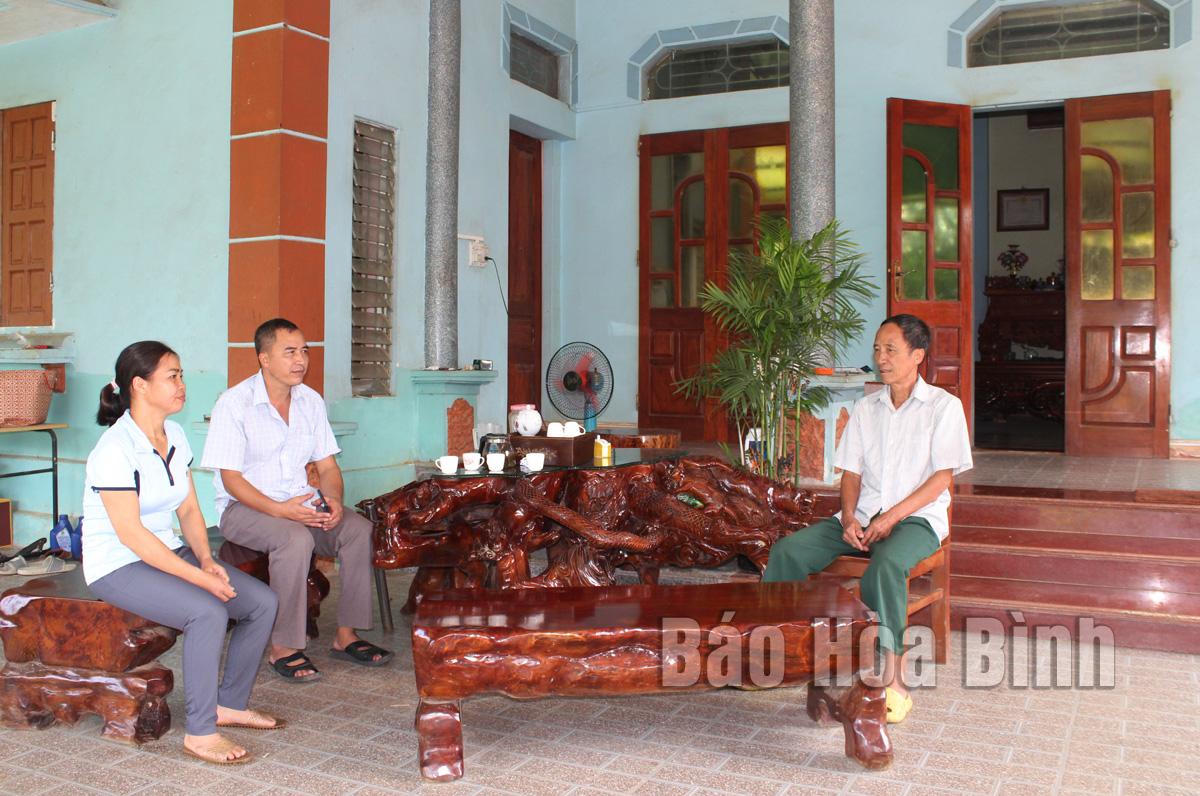
(HBO) – Bu Cham, formed from a merger of Phu Chau and Bu Cham villages, cover nearly 800 hectares. The village has 157 households with nearly 700 people, of which the Muong ethnic group accounts for 75% of its population. In addition to natives, 20% of the population are residents of Hanoi’s outlying districts suburban who settle here.
The family of Do Van Truong who resides in Bu Cham village, Hoa Binh city’s Thinh Minh commune, is recognised as an outstanding cultural family.
As its economy largely relies on agricultural production, Bu
Cham village is developing a number of crops and forming a concentrated
production area for high economic efficiency. Dong rieng (Canna edulis Ker –
Gawl) is the main crop with an area of 175ha and an average yield of 45 tonnes
per hectare.
After deducting all expenses, farmers can earn about 70 million VND (2,810 USD)
per year for each hectare of dong rieng.
Besides dong rieng, the village also engaged in horticulture, mainly pomelo and
herbal plants such as ca gai leo (Solanum procumbens). Currently, it has 20
hectares of pomelo and 16 hectares of cassava. Households earn about 300
million VND in profit for each hectare of pomelo.
Thanks to investment in machinery and equipment, some households
can earn about 600 VND per year from each hectare of ca gai leo.
Currently, there is a vermicelli production facility, a broom-making workshop,
some groups engaging in making bamboo and rattan products and two groups on construction
in the locality.
Other side trades create jobs for over 100 regular workers and many seasonal
ones with an average income of between 5and 6 million VND per month.
Locals’ living standards have improved over the years. Last year, the per capita
income of the village reached 55 million VND. About 65% of households became
better off and there were only two poor households.
Nguyen Vu Luc, head of Bu Cham village, said that people's livelihood has been
improved. The movement on new-style rural area building, especially the
"Clean house, beautiful garden, fresh environment, civilised alley",
was enthusiastically responded by local residents. Locals have donated land and
contributed working days to build roads and works in the village.
Health and education issues are also taken care of, he said,
adding that over 90% of the households meet the standards of cultural families. Last year, Bu Cham village took the lead in the emulation movement of 14
hamlets of Thinh Minh commune, and the village’s party cell was honoured as
excellently fulfilling its task./.
Living green is a healthy, positive, and sustainable lifestyle that not only helps protect
the environment and quality of life but also conserves natural resources and ecosystems.
Among the many ways to embrace this lifestyle, reducing plastic consumption is one of the most impactful.
The women's unions at all levels in Kim Boi district have been making significant contributions to the movement of building cultural life in the local community.
The movement helps improve rural look and the spiritual and material lives of local residents.
The Hoa Binh provincial People’s Committee has issued an action plan to ensure food safety, promote processing, and develop the market for agricultural, forestry, and fishery products in 2025.
In recent years, the development of rural handicrafts has not only helped preserve and promote the traditional values but it has also created jobs and improved incomes for the local residents.
By harmoniously combining traditional medicine with modern medical practices, the Hoa Binh Traditional Medicine Hospital is strengthening its role in the province’s healthcare system.



